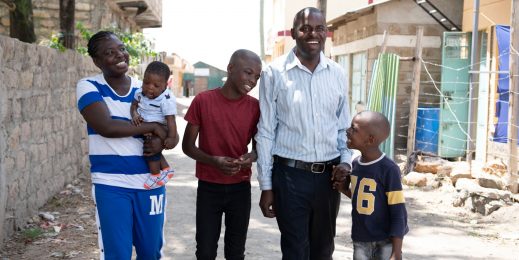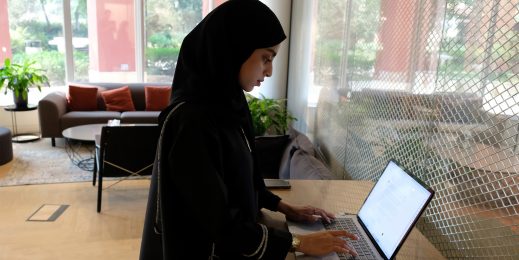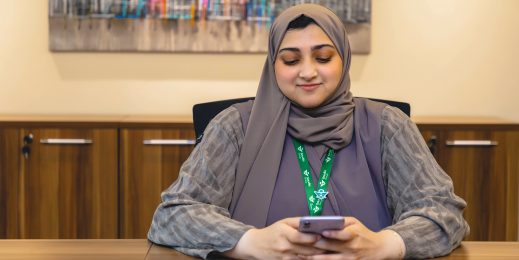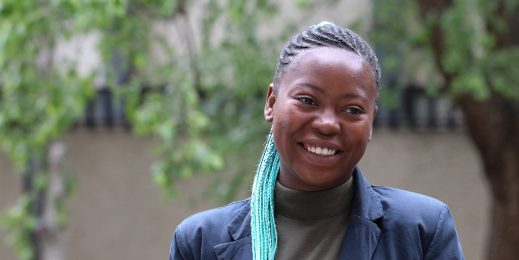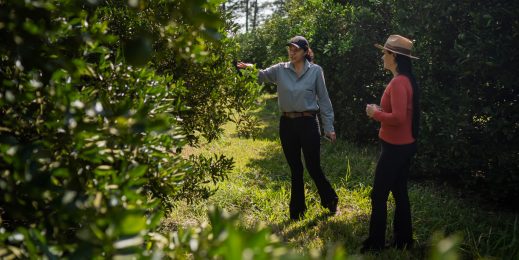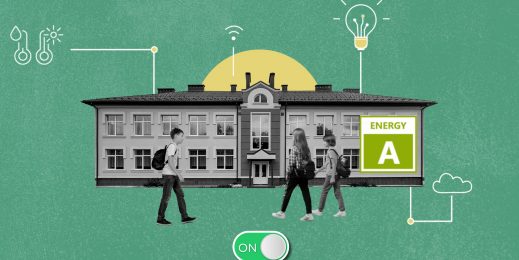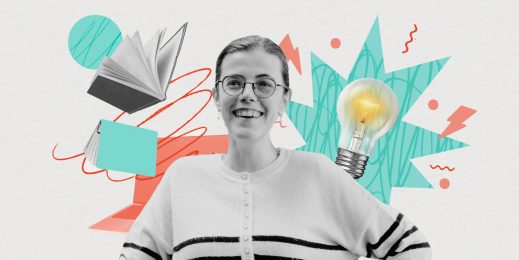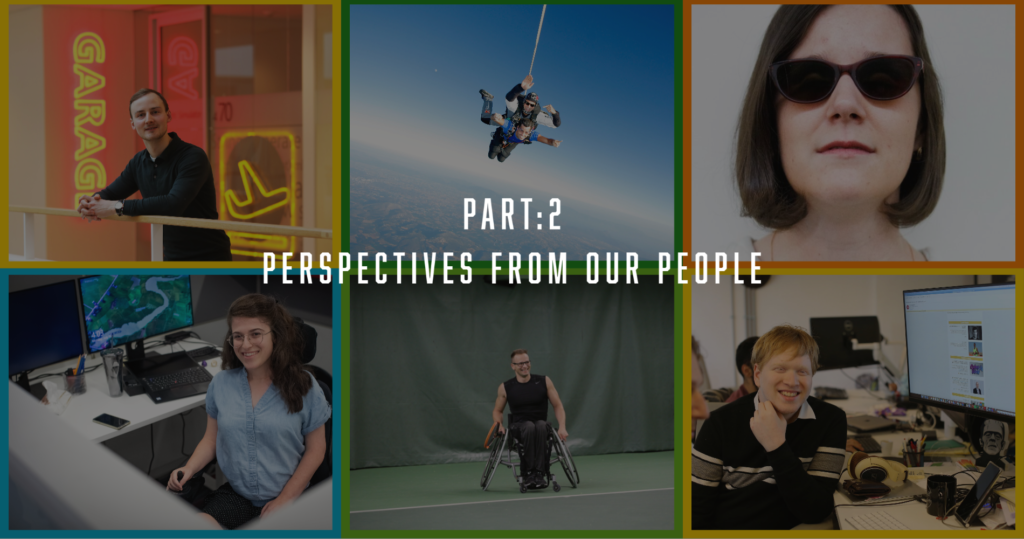
Disability in the workplace: Advice for leaders on fostering inclusivity in the workplace
The journey to increasing inclusion in the workplace and creating a more accessible, welcoming environment for people with disabilities is an ongoing one.
In the second article from this two-part series, Microsoft colleagues share insights for business leaders and managers looking to build inclusive work environments.
What tools have helped you in the workplace?
Yahav Bar, Software Engineer, Microsoft Israel R&D Center: In my case, as a software engineer, the only thing I need to work in the same way as a person without disabilities is magnification software, which already exists on every computer today.
Frederik Gylling, Partner Tech Strategist, Microsoft Denmark: I use assistive technologies and I also have a larger phone, larger monitor etc. I would like to have extra support in setting up my workstation in different environments and finding the right tools, which can be an extra burden. It would be helpful to have a dedicated IT person that understands my situation and can help.
Tomi Kuuppelomäki, Sr. Communications Manager, Microsoft Western Europe, Finland: There are some tools I find helpful when I’m on the move, such as using the dictation tool or Windows Hello, which helps you to sign in without needing to use your hands.
Alina Kudriavtceva, Interpreter of M&O, Microsoft Russia: As for assistive technologies, screen readers such as NVDA and Narrator cater for speech and braille output. I’d find it really helpful if third-party voices could also be connected to Narrator as well as the native ones.
Do you feel there is an appropriate structure in place so that you are supported? What can businesses do to ensure individual needs are met and supported?
Alina Kudriavtceva: When I started at Microsoft, I joined the internal employee resource group for people with visual impairments. This has been a valuable way to share experiences, get specific questions answered by the community, or directly reach out to developers to address a product-specific issue.
Frederik Gylling: Appropriate partner and employee resource groups make a huge difference. I’m helping with creating something specifically for new hires with disabilities, acting as a co-lead of an early in career initiative called Growth Groups.
Ilias Arkoudeas, Software Asset Management Lead & Territory Channel Manager for Education, Microsoft Greece: Our building is a showcase in terms of how accessible work facilities should be. The challenges usually arise when it comes to external meetings that aren’t accessible to me, but technology and the ability to join meetings virtually can help overcome this.
What advice do you have for employers, business leaders and managers to ensure they build inclusive working environments?
Frederik Gylling: In addition to logistical elements such as employee resource groups, and dedicated IT/HR resources, it’s also about bringing a growth mindset – don’t try to do everything right first time but listen and learn.
My biggest learning is that managers play a crucial role – I believe that my success or potential success comes from my manager. Managers should be properly supported to ensure they are best placed to leverage the skills of people with disabilities.
Tomi Kuuppelomäki: The mindset of the manager is important – it’s about being open and willing to understand a wide range of disabilities. Managers also shouldn’t assume things; every disability is personal and just because something works for one colleague doesn’t mean that it will work for others. They need to reach out and ask each employee what their specific needs are, without putting them on a pedestal either.
Ilias Arkoudeas: I believe that inclusive environments give everyone extra motivation. If the company mindset and culture is to treat everyone the same, then the definitions of being ‘different’ will have a whole other meaning, and never collide with the mission of the company and how it will be achieved.
Yahav Bar: There is a lot of room for improvement in awareness around this subject. Some people mistakenly stigmatize, stereotype and generalize about people with physical disabilities. This overlooks the entire identity of the person. My disability is not a justification for poor work, nor is it reason enough to spare me from receiving constructive criticism. As a person with a disability, I want to excel beyond anyone else in everything I do. People with disabilities don’t want pity, we just want equal, genuine opportunities.
How inclusive is your current work environment?
Frederik Gylling: I think my workplace is constantly improving. It’s very good, but not perfect – but that’s OK. It’s not a matter of always getting it right, it’s about how you learn from your mistakes and incorporate those learnings into your way of working.
Ilias Arkoudeas: Inclusiveness can be expressed in multiple ways. I have been treated the same way as other Microsoft professionals, which I appreciate. From a logistical point of view, all necessary arrangements are well taken care of, such as access around the office and for offsite meetings, which enables me to play a full role in the team.
Alina Kudriavtceva: We have a diverse team, and there are other employees with disabilities in my team and broader department. The term “inclusion” refers not only to people with disabilities, but to everyone, and my manager ensures that everyone has a chance to speak up and share their ideas.
Yahav Bar: I am proud to work for a company that has carved out the value of equality in a full and honest way. Hopefully we, as a society, will follow the same path and adopt these important values more widely, to create a better and more just world.






